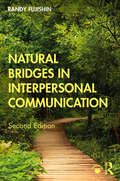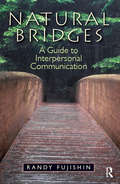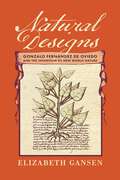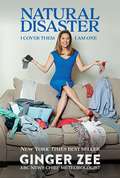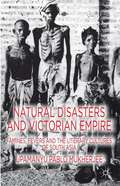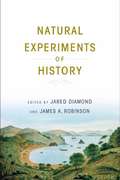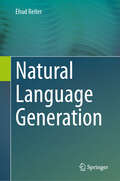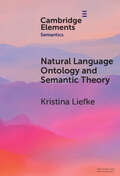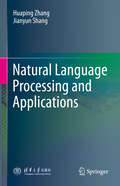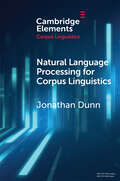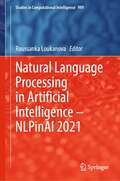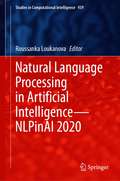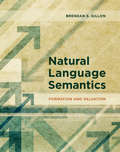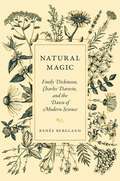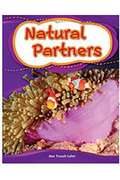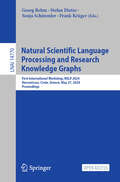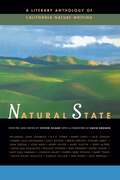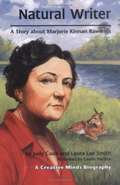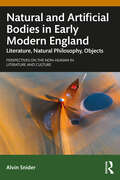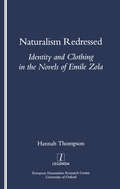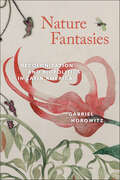- Table View
- List View
Natives against Nativism: Antiracism and Indigenous Critique in Postcolonial France (Muslim International)
by Olivia C. HarrisonExamining the intersection of Palestine solidarity movements and antiracist activism in France from the 1970s to the present For the pasty fifty years, the Palestinian question has served as a rallying cry in the struggle for migrant rights in postcolonial France, from the immigrant labor associations of the 1970s and Beur movements of the 1980s to the militant decolonial groups of the 2000s. In Natives against Nativism, Olivia C. Harrison explores the intersection of anticolonial solidarity and antiracist activism from the 1970s to the present.Natives against Nativism analyzes a wide range of texts—novels, memoirs, plays, films, and militant archives—that mobilize the twin figures of the Palestinian and the American Indian in a crossed critique of Eurocolonial modernity. Harrison argues that anticolonial solidarity with Palestinians and Indigenous Americans has been instrumental in developing a sophisticated critique of racism across imperial formations—in this case, France, the United States, and Israel.Serving as the first relational study of antiracism in France, Natives against Nativism observes how claims to indigeneity have been deployed in multiple directions, both in the ongoing struggle for migrant rights and racial justice, and in white nativist claims in France today.
Natural Bridges in Interpersonal Communication
by Randy FujishinRandy Fujishin’s Natural Bridges in Interpersonal Communication, Second Edition is a concise, practical, and reader-friendly book that introduces students to the basic concepts and skills of interpersonal communication. The book presents the fundamental tools necessary to effectively communicate in face-to-face and online interactions in personal and professional life settings. Fujishin’s approachable writing style engages students, inviting them to consider how best to approach their own opportunities to communicate with others. New to this edition, each chapter includes a discussion of foundational research, with suggestions for further reading and online resources. This textbook is designed for Communication Studies, Business, and Career and Trade courses at the community college and four-year university level. Online instructor materials that accompany the book include an instructor manual, sample exams, and a sample class schedule. <P><P><i>Advisory: This book offers only partial accessibility. We have kept it in the collection because it is useful for some of our members. Benetech is actively working on projects to improve accessibility issues such as these in the future.</i>
Natural Bridges: A Guide to Interpersonal Communication
by Randy FujishinNatural Bridges is a concise, practical, inexpensive, and student-friendly guide to interpersonal communication. This book explores the fundamental principles and skills necessary for effective communication. Building on the theme that our every word and behavior contributes to building a bridge or a barrier in our daily interactions with others, Natural Bridges provides students with concepts and real-world guidelines for productive communication with acquaintances, friends, family-members, romantic partners, and co-workers.
Natural Designs: Gonzalo Fernández de Oviedo and the Invention of New World Nature (The Early Modern Americas)
by Elizabeth GansenNatural Designs chronicles the life and work of the earliest and most influential Spanish historian of the New World, Gonzalo Fernández de Oviedo (1478–1557). Through a combination of biography and visual and textual analysis, Elizabeth Gansen explores how Oviedo, in his writings, brought the European Renaissance to bear on his understanding of New World nature.Oviedo learned much from the humanists with whom he came into contact in the courtly circles of Spain and Italy, including Giovanni Battista Ramusio and Pietro Bembo, and witnessed Christopher Columbus regaling Queen Isabel and King Ferdinand with news from his inaugural voyage to the Indies. Fascinated by the Caribbean flora and fauna Oviedo encountered on his arrival to the Caribbean in 1514, he made them the protagonists of his writings on the Indies. From his consumption of the prickly pear cactus, which led him to believe his death was imminent, to the behavior of the iguana, which defied his efforts to determine if the lizard was fish or flesh, his works reveal the challenges at the heart of Spain’s encounter with the biological wonders of the Americas.Natural Designs foregrounds Oviedo’s role as a writer, illustrator, and editor of New World nature. As much as Oviedo is credited as a pioneer in the literary genre of American natural history, his contributions to early modern conceptions of the flora and fauna of the Indies are still not widely understood and appreciated. Gansen situates us in the early sixteenth century to reappraise the works of the Spanish historian who first shaped these realities.
Natural Disaster: I Cover them. I am one.
by Ginger ZeeGinger grew up in small-town Michigan where she developed an obsession with weather as a young girl. Ginger opens up about her lifelong battle with crippling depression, her romances that range from misguided to dangerous, and her tumultuous professional path.
Natural Disasters and Victorian Empire
by Upamanyu Pablo MukherjeeNatural Disasters and Victorian Empire looks at the relationship between epidemics and famines in south Asia and Victorian literature and culture. It suggests that much of how we think today about disasters, state and society can be traced back to the 19th-century British imperial experience.
Natural Experiments of History
by Jared Diamond James A. RobinsonIn eight case studies by leading scholars in history, archaeology, business, economics, geography, and political science, the authors showcase the natural experiment or comparative method-well-known in any science concerned with the past-on the discipline of human history. That means, according to the editors, comparing, preferably quantitatively and aided by statistical analyses, different systems that are similar in many respects, but that differ with respect to the factors whose influence one wishes to study. The case studies in the book support two overall conclusions about the study of human history: First, historical comparisons have the potential for yielding insights that cannot be extracted from a single case study alone. Second, insofar as is possible, when one proposes a conclusion, one may be able to strengthen one’s conclusion by gathering quantitative evidence (or at least ranking one’s outcomes from big to small), and then by testing the conclusion’s validity statistically.
Natural Language Analytics with Generative Large-Language Models: A Practical Approach with Ollama and Open-Source LLMs (SpringerBriefs in Computer Science)
by Paulo Novais Dalila Durães Francisco S. Marcondes Adelino Gala Renata Magalhães Fernando Perez de BrittoThis book explores the application of generative Large Language Models (LLMs) for extracting and analyzing data from natural language artefacts. Unlike traditional uses of LLMs, such as translation and summarization, this book focuses on utilizing these models to convert unstructured text into data that can be processed through the data science pipeline to generate actionable insights. The content is designed for professionals in diverse fields including cognitive science, linguistics, management, and information systems. It combines insights from both industry and academia to provide a comprehensive understanding of how LLMs can be effectively used for natural language analytics (NLA). The book details practical methodologies for implementing LLMs locally using open-source tools, ensuring data privacy and feasibility without the need for expensive infrastructure. Key topics include interpretant, mindset and cultural analysis, emphasizing the use of LLMs to derive soft data—qualitative information crucial for nuanced decision-making. The text also outlines the technical aspects of LLMs, including their architecture, token embeddings, and the differences between encoder-based and decoder-based models. By providing a case study and practical examples, the authors show how LLMs can be used to meet various analytical needs, making this book a valuable resource for anyone looking to integrate advanced natural language processing techniques into their data analysis workflows.
Natural Language Generation
by Ehud ReiterIn late 2022, the prominence of Natural Language Generation (NLG) surged with the advent of advanced language models like ChatGPT. While these developments have captivated both academic and commercial sectors, the focus has predominantly been on the latest innovations, often overlooking the rich history and foundational work in NLG. This book aims to provide a comprehensive overview of NLG, encompassing not only language models but also alternative approaches, user requirements, evaluation methods, safety and testing protocols, and practical applications. Drawing on decades of NLG research, the book is designed to be a valuable resource for both researchers and developers, offering insights that remain relevant far beyond the current technological landscape. Natural Language Generation focuses on data-to-text but also looks at other types of NLG including text summarization. The book takes a holistic approach to NLG, looking at requirements (what users are looking for), design, data issues, testing, evaluation, safety and ethical issues as well as technology. The holistic approach is unique to this book and is very valuable for people building real-world NLG systems, and for academics and researchers who are interested in applied NLG. The author, who previously co-authored a seminal NLG book in 2000, emphasizes high-level concepts and methodologies, ensuring the material's longevity and utility. The book is structured to balance technical depth with practical relevance, including chapters on rule-based and neural NLG approaches, user requirements, rigorous evaluation techniques, and safety considerations. Real-world applications, particularly in journalism, business intelligence, summarization, and medicine, are explored to illustrate NLG's potential and scalability. With personal anecdotes and examples from the author's experiences, this book provides a unique and engaging perspective on the evolving field of NLG, making it an indispensable guide for those looking to harness the power of language generation technologies.
Natural Language Ontology and Semantic Theory (Elements in Semantics)
by Kristina LiefkeThis Element gives an introduction to the emerging discipline of natural language ontology. Natural language ontology is an area at the interface of semantics, metaphysics, and philosophy of language that is concerned with which kinds of objects are assumed by our best semantic theories. The Element reviews different strategies for identifying a language's ontological commitments. It observes that, while languages share a large number of their ontological commitments (such as to individuals, properties, events, and kinds), they differ in other commitments (for example, to degrees). The Element closes by relating different language and theory-specific ontologies, and by pointing out the merits and challenges of identifying inter-category relations within a single ontology.
Natural Language Processing and Applications
by Huaping Zhang Jianyun ShangThis book gives a comprehensive introduction to natural language processing (NLP) and its applications, covering the topics of multimodal data processing, Chinese word segmentation, new word discovery, named entity recognition, keyword analysis, and knowledge graph construction in terms of semantic analysis. The inaugural chapter provides an overview of NLP, and the subsequent chapters delve into the foundations of artificial intelligence, covering traditional deep learning algorithms and platforms. The book then evolves to showcase the latest advancements in deep learning, addressing bottlenecks and unfolding developments from data-oriented, training-oriented, and application-oriented perspectives. Part II of the book navigates the practical applications of intelligent language processing. From web crawlers and multi-format document parsing to speech text recognition, readers gain insights into real-world scenarios. Each chapter provides examples and analyses, empowering readers to bridge theoretical knowledge with hands-on application, unlocking the transformative potential of AI through intelligent language processing. This book serves as a comprehensive resource for researchers, graduate students, and undergraduates in the field of natural language processing. Additionally, it offers valuable insights as a reference for engineers, technicians, and enthusiasts interested in the realm of big data intelligence. The translation was done with the help of artificial intelligence. A subsequent human revision was done primarily in terms of content.
Natural Language Processing for Corpus Linguistics (Elements in Corpus Linguistics)
by Jonathan DunnCorpus analysis can be expanded and scaled up by incorporating computational methods from natural language processing. This Element shows how text classification and text similarity models can extend our ability to undertake corpus linguistics across very large corpora. These computational methods are becoming increasingly important as corpora grow too large for more traditional types of linguistic analysis. We draw on five case studies to show how and why to use computational methods, ranging from usage-based grammar to authorship analysis to using social media for corpus-based sociolinguistics. Each section is accompanied by an interactive code notebook that shows how to implement the analysis in Python. A stand-alone Python package is also available to help readers use these methods with their own data. Because large-scale analysis introduces new ethical problems, this Element pairs each new methodology with a discussion of potential ethical implications.
Natural Language Processing in Artificial Intelligence — NLPinAI 2021 (Studies in Computational Intelligence #999)
by Roussanka LoukanovaThe book covers theoretical work, approaches, applications, and techniques for computational models of information, language, and reasoning. Computational and technological developments that incorporate natural language are proliferating. Adequate coverage of natural language processing in artificial intelligence encounters problems on developments of specialized computational approaches and algorithms. Many difficulties are due to ambiguities in natural language and dependency of interpretations on contexts and agents. Classical approaches proceed with relevant updates, and new developments emerge in theories of formal and natural languages, computational models of information and reasoning, and related computerized applications. Its focus is on computational processing of human language and relevant medium languages, which can be theoretically formal, or for programming and specification of computational systems. The goal is to promote intelligent natural language processing, along with models of computation, language, reasoning, and other cognitive processes.
Natural Language Processing in Artificial Intelligence—NLPinAI 2020 (Studies in Computational Intelligence #939)
by Roussanka LoukanovaThis book covers theoretical work, applications, approaches, and techniques for computational models of information and its presentation by language (artificial, human, or natural in other ways). Computational and technological developments that incorporate natural language are proliferating. Adequate coverage encounters difficult problems related to ambiguities and dependency on context and agents (humans or computational systems). The goal is to promote computational systems of intelligent natural language processing and related models of computation, language, thought, mental states, reasoning, and other cognitive processes.
Natural Language Semantics: Formation and Valuation
by Brendan S. GillonAn introduction to natural language semantics that offers an overview of the empirical domain and an explanation of the mathematical concepts that underpin the discipline.This textbook offers a comprehensive introduction to the fundamentals of those approaches to natural language semantics that use the insights of logic. Many other texts on the subject focus on presenting a particular theory of natural language semantics. This text instead offers an overview of the empirical domain (drawn largely from standard descriptive grammars of English) as well as the mathematical tools that are applied to it. Readers are shown where the concepts of logic apply, where they fail to apply, and where they might apply, if suitably adjusted. The presentation of logic is completely self-contained, with concepts of logic used in the book presented in all the necessary detail. This includes propositional logic, first order predicate logic, generalized quantifier theory, and the Lambek and Lambda calculi. The chapters on logic are paired with chapters on English grammar. For example, the chapter on propositional logic is paired with a chapter on the grammar of coordination and subordination of English clauses; the chapter on predicate logic is paired with a chapter on the grammar of simple, independent English clauses; and so on.The book includes more than five hundred exercises, not only for the mathematical concepts introduced, but also for their application to the analysis of natural language. The latter exercises include some aimed at helping the reader to understand how to formulate and test hypotheses.
Natural Magic: Emily Dickinson, Charles Darwin, and the Dawn of Modern Science
by Renée BerglandA captivating portrait of the poet and the scientist who shared an enchanted view of natureEmily Dickinson and Charles Darwin were born at a time when the science of studying the natural world was known as natural philosophy, a pastime for poets, priests, and schoolgirls. The world began to change in the 1830s, while Darwin was exploring the Pacific aboard the Beagle and Dickinson was a student in Amherst, Massachusetts. Poetry and science started to grow apart, and modern thinkers challenged the old orthodoxies, offering thrilling new perspectives that suddenly felt radical—and too dangerous for women.Natural Magic intertwines the stories of these two luminary nineteenth-century minds whose thought and writings captured the awesome possibilities of the new sciences and at the same time strove to preserve the magic of nature. Just as Darwin&’s work was informed by his roots in natural philosophy and his belief in the interconnectedness of all life, Dickinson&’s poetry was shaped by her education in botany, astronomy, and chemistry, and by her fascination with the enchanting possibilities of Darwinian science. Casting their two very different careers in an entirely fresh light, Renée Bergland brings to life a time when ideas about science were rapidly evolving, reshaped by poets, scientists, philosophers, and theologians alike. She paints a colorful portrait of a remarkable century that transformed how we see the natural world.Illuminating and insightful, Natural Magic explores how Dickinson and Darwin refused to accept the separation of art and science. Today, more than ever, we need to reclaim their shared sense of ecological wonder.
Natural Partners (Focus Forward #Orange Level)
by Alan Trussell-CullenNatural partners are animals or plants that live or work together to help themselves and each other.
Natural Scientific Language Processing and Research Knowledge Graphs: First International Workshop, NSLP 2024, Hersonissos, Crete, Greece, May 27, 2024, Proceedings (Lecture Notes in Computer Science #14770)
by Stefan Dietze Georg Rehm Frank Krüger Sonja SchimmlerThis Open Access book constitutes the refereed proceedings of the First International Workshop on Natural Scientific Language Processing and Research Knowledge Graphs, NSLP 2024, held in Hersonissos, Crete, Greece, on May 27, 2024. The 10 full papers and 11 short papers included in this volume were carefully reviewed and selected from a total of 26 submissions. The proceedings aims to bring together researchers working on the processing, analysis, transformation and making use-of scientific language and research knowledge graphs including all relevant sub-topics.
Natural State: A Literary Anthology of California Nature Writing
by David Brower Steven GilbarThis is the first anthology of nature writing that celebrates California, the most geographically diverse state in the union. Readers--be they naturalists or armchair explorers--will find themselves transported to California's many wild places in the company of forty noted writers whose works span more than a century. Divided into sections on California's mountains, hills and valleys, deserts, coast, and elements (earth, wind, and fire), the book contains essays, diary entries, and excerpts from larger works, including fiction. As a prelude to the collection, editor Steven Gilbar presents two California Indian creation myths, one a Cahto narrative and the other an A-juma-wi story as told by Darryl Babe Wilson. Familiar names appear in these pages--John Muir, Robert Louis Stevenson, John McPhee, M.F.K. Fisher, Gretel Ehrlich--but less familiar writers such as Daniel Duane, Margaret Millar, and John McKinney are also included. Among the gems in this treasure trove are Jack Kerouac on climbing Mt. Matterhorn, Barry Lopez on snow geese migration at Tule Lake, Edward Abbey on Death Valley, Henry Miller on Big Sur, and Joan Didion on the Santa Ana winds. Gary Snyder's inspiring Afterword reflects the spirit of environmentalism that runs throughout the book. Natural State also reveals the many changes to California's landscape that have occurred in geological time and in human terms. More than a book of "nature writing," this book is superb writing about nature.
Natural Writer: A Story about Marjorie Kinnan Rawlings
by Judy Cook Laura Lee SmithBiography of the author of the children's classic tale, The Yearling.
Natural and Artificial Bodies in Early Modern England: Literature, Natural Philosophy, Objects (Perspectives on the Non-Human in Literature and Culture)
by Alvin SniderThis book brings contemporary ways of reconceptualizing the human relationship to things into conversation with seventeenth-century writing, exploring how the literature of the period intersected with changing understandings of the conceptual structure of matter and how human beings might reconfigure their place in a web of nonhuman relations. Focusing on texts that cross the frontier between literature and science, Snider recovers the material and body worlds of seventeenth-century culture as treated in poetry, natural philosophy, medical treatises, comedy, and prose fiction. He shows how a range of writers understood and theorized “matter,” “bodies,” and “spirits” as characters in complex and sometimes bizarre scenarios involving human relationships to the phenomenal world. The logic that made matter subject to uniform theorizing facilitated a crossing of boundaries between the human and nonhuman and became a persistent figure of explanation at the time when distinctions between the natural and the artificial were undergoing reformulation.
Naturalism (The Critical Idiom Reissued #17)
by Lilian R. Furst Peter N. SkrineFirst published in 1971, this book examines the literary style of Naturalism. After introducing the reader to the term itself, including its history and its relationship to Realism, it goes on to trace the origins of the Naturalist movement as well as particular groups which adhered to Naturalism and the theories they espoused. It also provides a summary of the key Naturalist literary works and concludes which a brief reflection on the movement as a whole. This book will be of interest to those studying nineteenth and early twentieth-century literature.
Naturalism Redressed: Identity and Clothing in the Novels of Emile Zola
by Hannah Thompson"References to clothing in the nineteenth-century naturalist novel have traditionally been read merely as examples of descriptive detail. Thompson, in her groundbreaking study on Zola, rescues clothing from the margins of representation, and draws on a wide range of twentieth-century feminist and queer theory to demonstrate that clothing troubles such binary pairs as 'masculine' and 'feminine', 'normal' and 'perverse', 'natural' and 'artificial' that lie at the foundations of Zolian naturalism. The author's investment in the signifying power of clothing in the Rougon-Macquart is such that the novels can no longer be read as unproblematic illustrations of literary naturalism; in fact its intensity demands that Zola's relationship to literature and his descriptions of Second Empire society be reassessed."
Naturalism’s Imaginary Museum, French Art, and the Eclectic Nineteenth Century (University of Toronto Romance Series)
by Sara PappasNaturalism’s Imaginary Museum, French Art, and the Eclectic Nineteenth Century examines one of the most revered art historical narratives of Western art: the famous turning point for painting and sculpture usually emblematized by the works of Édouard Manet and then the Impressionists. Instead of the usual revaluation of this turning point, Sara Pappas argues for the importance of the failure to find a cohesive story for the art world in the period itself, a difficulty that carries forward to galleries today. In order to demonstrate the importance of incongruity and disorder, Pappas brings together two worlds that may seem incompatible: nineteenth-century literary writers involved in naturalism and the organization of permanent collections of later nineteenth-century French art in today’s museums. Drawing on the art novels and art criticism of these writers, the book provides optimal access to the questions that continue to haunt the categorization and display of nineteenth-century art.
Nature Fantasies: Decolonization and Biopolitics in Latin America (Bucknell Studies in Latin American Literature and Theory)
by Gabriel HorowitzIn this original study, Gabriel Horowitz examines the work of select nineteenth- and twentieth-century Latin American writers through the lens of contemporary theoretical debates about nature, postcoloniality, and national identity. In the work of José Martí, Gertrudis Gómez de Avellaneda, Jorge Luis Borges, Augusto Roa Bastos, Cesar Aira, and others, he traces historical constructions of nature in regional intellectual traditions and texts as they inform political culture on the broader global stage. By investigating national literary discourses from Cuba, Argentina, and Paraguay, he identifies a common narrative thread that imagines the utopian wilderness of the New World as a symbolic site of independence from Spain. In these texts, Horowitz argues, an expressed desire to return to the nation’s foundational nature contributed to a movement away from political and social engagement and toward a “biopolitical state,” in which nature, traditionally seen as pre-political, conversely becomes its center.

